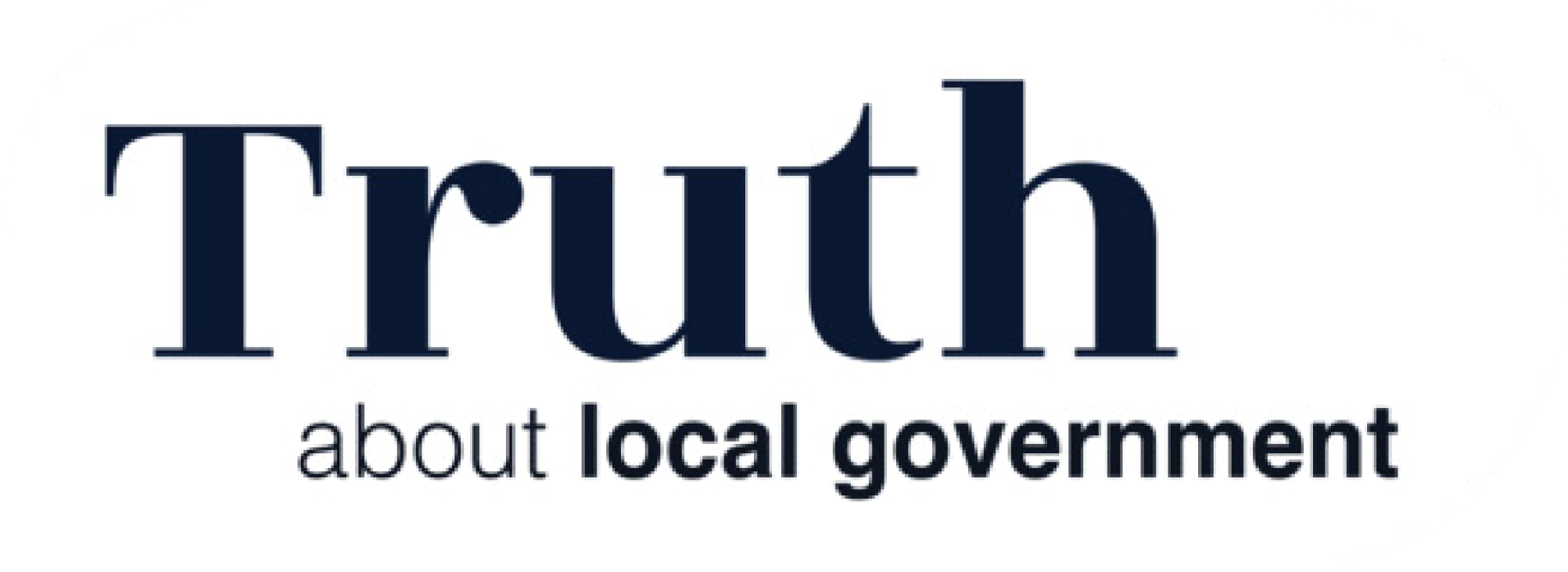Austerity – Who You ‘Gonna’ Call?
- truthaboutlocalgov
- Jul 23
- 7 min read
Working in local government has never been for the faint-hearted. It’s a space defined by complexity, scrutiny, and constant change. But over the past fifteen years, one word has come to define the landscape more than any other: austerity. What began as a fiscal policy has evolved into a defining context an ever-present backdrop that influences every decision, every budget line, and every strategic ambition. Austerity isn’t just about cutting costs anymore. It’s about navigating a world where resources are perpetually scarce, expectations remain high, and the margin for error is razor-thin. We’ve become experts in adaptation streamlining services, embracing digital, and finding new ways to deliver value. But let’s be honest: the pressure hasn’t lifted. If anything, it’s grown more acute, more relentless. So, when you’re staring down a critical gap whether it’s a leadership vacuum, a missing skillset, or a project that’s lost momentum what do you do? You bring in help. But not just any help. The real challenge lies in identifying the right kind of support and ensuring that support delivers real, measurable impact.

The External Support Conundrum
Across the sector, the use of external professionals interims, consultants, and agency workers has become increasingly common. On paper, this makes sense. These roles offer flexibility, expertise, and speed. But in practice, the picture is more complicated.
We’ve all seen the pitfalls. The interim who becomes a semi-permanent fixture, clocking up years on a day rate that dwarfs the Chief Executive’s salary. The consultant who dazzles with jargon and glossy slides, only to deliver a generic strategy that’s been recycled from their last three clients. The agency worker who arrives with good intentions but ends up underutilised due to a lack of onboarding or direction.
These aren’t isolated incidents they’re recurring frustrations. And they point to a deeper issue: a lack of clarity. Too often, we don’t fully understand what we need, why we need it, or how to manage it once it’s in place.

Understanding the Roles: Interim, Consultant, Agency
To use external support effectively, we need to start with the basics: understanding the distinct roles and what each is best suited for.
Interim
An interim professional is typically brought in to fill a leadership or specialist role during a period of transition or turbulence. They’re expected to hit the ground running, take ownership, and deliver results fast. They’re not there to learn the ropes; they’re there to steer the ship.
Example: Covering a Director of Children’s Services post during recruitment, or leading a high-stakes turnaround project where time is of the essence.
Consultant
Consultants are external advisors brought in to provide strategic insight, challenge assumptions, and offer a fresh perspective. They’re not embedded in the day-to-day they operate at a distance, which allows them to see the bigger picture and ask the difficult questions.
Example: Designing a new operating model, conducting a cross-service review, or advising on a complex digital transformation programme.
Agency Worker
Agency staff are typically used to plug short-term operational gaps. They’re essential for maintaining service continuity during periods of absence, increased demand, or recruitment delays. While they’re not usually involved in strategic work, their contribution is vital to keeping the wheels turning.
Example: Providing temporary admin support, covering a planning officer role, or supporting project delivery during a peak period.
The Cultural Challenge
Even when the right external support is brought in, success isn’t guaranteed. One of the most persistent challenges is cultural alignment. External professionals, by nature, are temporary. They often don’t have the time or the incentive to fully immerse themselves in the organisation’s culture, values, or long-term vision. This can create a disconnect. Internal teams may feel side-lined, undervalued, or even threatened. Morale can dip. And when the contract ends, the knowledge and momentum often walk out the door with the individual. That’s not to say external professionals don’t care. Many are deeply committed and bring a wealth of experience and passion to their roles. But the temporary nature of their engagement means they’re often focused on delivery, not legacy.
So, What’s the Answer?
The key lies in intentionality. Before bringing in external support, ask the tough questions:
What exactly do we need?
What outcomes are we expecting?
How will we measure success?
Who will manage the relationship?
How will we ensure knowledge transfer?
External support can be a powerful tool but only when it’s used strategically, managed effectively, and aligned with the organisation’s goals and culture. Because in a world shaped by austerity, we can’t afford to get it wrong.
Planning: The Most Overlooked Step
In the fast-paced world of local government, where demands are high and resources are stretched thin, the temptation to act quickly is understandable. When a gap appears whether in leadership, delivery, or expertise the instinct is to fill it fast. But here’s the uncomfortable truth: many of the problems we face with external support are not just about the people we hire they’re about how we plan for their arrival.
We often bring people in without a clear understanding of what we want them to achieve. We skip the planning phase, assuming that once someone is in post, the details will sort themselves out. But they rarely do. Without a well-defined brief, without agreed outcomes, without structured timelines and checkpoints, even the most capable external professional will struggle to deliver meaningful value.
We fail to define success. We don’t set expectations around delivery. We don’t challenge assumptions about cost, time commitment, or scope. And then, when things don’t go to plan, we’re left frustrated not just with the outcome, but with the process itself.

The Template Trap
To make matters worse, many consultants and firms rely heavily on standardised, templated solutions. These are pre-built frameworks, documents, and methodologies that are rolled out across multiple organisations with minimal adaptation. On the surface, they look polished and professional. But dig a little deeper, and you’ll often find that they lack the nuance and specificity needed to address the unique challenges of your organisation. Officers spend hours feeding data into these templates providing context, background, and insight only to be told that their concerns are “resistance to change” when they question the relevance of the recommendations. The result is a disconnect between the external support and the internal reality.
And what do we get in return?
Time and energy wasted on processes that don’t reflect local needs
Staff morale eroded by feeling unheard, undervalued, or sidelined
Targets missed due to misaligned priorities or unrealistic expectations
And a large invoice at the end, often with little tangible impact

So, What Can We Do Differently?
The good news is that these issues are not inevitable. With a more thoughtful, structured, and strategic approach, we can dramatically improve the outcomes of our external engagements. Here are five practical steps that can help us make better decisions, achieve stronger results, and use our limited resources more wisely:
1. Start with the ‘Why’
Before you even begin the procurement process, take the time to understand the problem you’re trying to solve. What’s driving the need for external support? Is it a lack of capacity, a need for specialist expertise, or a desire for external challenge?
Define the brief clearly. What are the objectives? What are the deliverables? What does success look like not just in abstract terms, but in concrete, measurable outcomes?
If you can’t answer these questions with confidence, you’re not ready to hire. Clarity at the start is the foundation for everything that follows.
2. Define the Timeframe
Set clear timelines from the outset. Break the work into phases if necessary. Establish milestones, review points, and decision gates. Be realistic about what can be achieved and by when.
And crucially, plan for what happens when the contract ends. Who will take ownership of the work? How will knowledge be transferred? What’s the exit strategy?
Too many contracts drift beyond their original scope or timeline simply because no one planned for the end. A well-managed timeframe keeps everyone focused and accountable.
3. Challenge the Full-Time Default
It’s easy to default to a full-time engagement, especially when the pressure is on. But full-time contracts are expensive and they’re not always necessary.
Ask yourself: do we really need someone five days a week? Could the work be delivered in phases, or through a part-time arrangement? Could we structure the engagement around key decision points or deliverables? Being flexible with time commitments can reduce costs, improve focus, and allow for more agile delivery.
4. Test Their Thinking
Don’t just rely on credentials, CVs, or glossy proposals. Use your brief as part of the interview or procurement process. Ask candidates how they would approach the challenge. What’s their methodology? How would they engage with your team? What assumptions are they making? Look for insight, creativity, and alignment with your goals. The best external professionals will welcome the opportunity to demonstrate their thinking and will be open to challenge and dialogue.
5. Manage the Contract
This is where many engagements fall down. Once the contract is signed, it’s tempting to step back and assume things will run smoothly. But external support needs active management. Schedule regular check-ins. Review progress against milestones. Provide feedback. Hold people accountable. And most importantly don’t let the end date drift. If the work isn’t done, ask why. If it is done, close the contract and move on. Contract management isn’t just about oversight it’s about partnership. It’s about making sure the work stays on track, the relationship stays productive, and the outcomes stay aligned with your goals.

Final Thoughts
This isn’t about criticising interims, consultants, or agency workers. There are many talented, committed professionals out there who can bring real value to your organisation. But to get the best from them, we need to be more thoughtful, more strategic, and more disciplined in how we engage them. In a world of shrinking budgets, rising expectations, and increasing complexity, we simply can’t afford to waste time, money, or energy. Every contract matters. Every engagement counts. With a bit more planning, a bit more clarity, and a bit more challenge, we can ensure that our external support delivers real impact not just activity, but outcomes. Not just presence, but progress. Let’s be smarter. Let’s be sharper. Let’s make every contract count and build the kind of public services our communities truly deserve.
This blog was written by an Executive Director who has chosen to remain anonymous.




